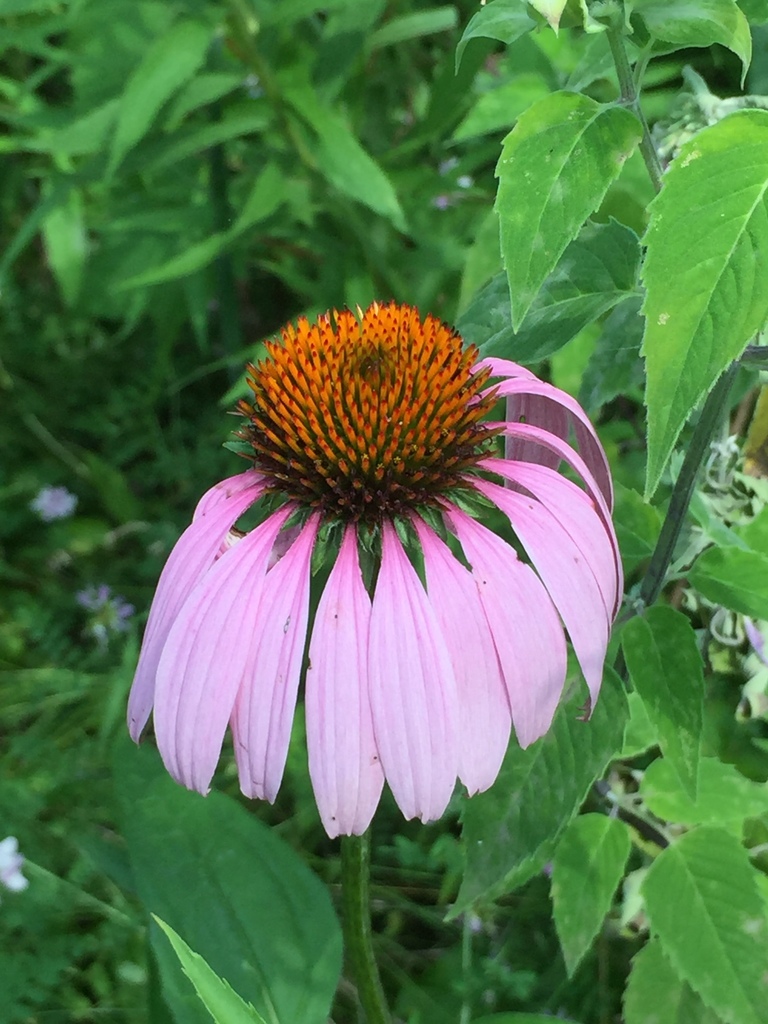Part of a series on invasive species by guest blogger Ed Pope
Burning bush, also known as winged burning bush, is native to eastern Asia. It was imported into New England in 1860 and became a popular landscaping shrub for a couple of reasons. It is very easy to grow, and it grows slowly, so it doesn’t have to be trimmed often.
Burning bush is frequently used in hedges, often found in commercial areas or foundations around private homes. Its name comes from the brilliant red color of its leaves in the fall. Unfortunately, it has become a problem in the eastern United States and is considered an invasive in over twenty states. It has been banned in New Hampshire, Maine and Massachusetts.
Although burning bushes grow slowly, they can eventually reach heights of 25 feet. They flower in spring to early summer. Their small red fruits appear in September or October. Some seeds drop to the ground and germinate, producing small shrubs underneath the parent. Others are eaten by birds and those seeds are dispersed widely. Burning bush has become a problem in and around wooded areas, especially hardwood forests, where they outcompete and displace native species. These infestations usually start from nearby ornamental plantings.
Three native Indiana plants (non-invasive) are closely related to burning bush:
- Eastern burning bush (also known as wahoo) has longer leaves that each fall turn a brownish orange, instead of red.
- Running strawberry bush is more of a ground cover, and never gets more than a few feet in height.
- Strawberry bush is a small shrub that only occurs in southwestern Indiana, usually in moist woodland soil.
Removing a burning bush infestation is typically a multi-year effort. Fortunately, the seeds can no longer germinate after one or two years, much less than garlic mustard, which can lay dormant five years. The best way to remove burning bushes is often a mix of cutting and spraying. Start by cutting all trees more than chest high. The cut surface of the stump should immediately be treated with herbicide to keep it from resprouting. The cut trees need to be removed to get them out of the way. The remaining (smaller) burning bushes should be sprayed.
Here is a Purdue University video about removing burning bush:
Native alternatives to burning bush include: wahoo or eastern burning bush, highbush cranberry, chokeberry, leatherwood and spicebush.
Burning bush is an invasive that can be found on most CILTI properties, however there are few infestations that are extreme. Meltzer Woods had a pretty serious population, but it has been knocked back from years of treatment. Because it is spread by birds and it has been used so heavily in residential plantings, there is some almost everywhere. Luckily, it is quite easy to identify in the forest and really becomes obvious in the fall when it turns bright red and everything else in the understory is losing leaves. The stewardship team tackles if by cutting/treating, spraying and even pulling young plants.
Want to help CILTI restore natural areas? Check out volunteer opportunities here. You can help us improve the health of forests and other natural habitats.

Ed Pope
Guest Blogger